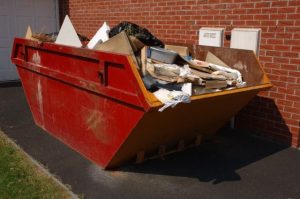When using a skip bin, it’s crucial to know what materials are acceptable to ensure efficient waste management and compliance with local regulations. Understanding these guidelines will help you sort your waste properly, avoid additional fees, and contribute to a more sustainable environment. This article will provide a detailed overview of acceptable materials for skip bins, including tips for proper disposal and common restrictions.
Understanding Skip Bin Categories
Skip bins come in various types, each designed to handle specific types of waste. Familiarizing yourself with these categories can help you choose the right bin and ensure proper disposal. Here are the main categories:
1. General Waste
General waste includes everyday items that do not fall into specific categories like recyclables or hazardous materials. This category typically comprises:
Household Waste: Items such as food scraps, packaging, and broken household items.
Non-Recyclable Materials: Items that cannot be recycled, like some plastics and dirty paper products.
Old Furniture: Pieces of furniture that are no longer in use, like sofas and chairs.
General Rubbish: Various unwanted items not covered by other categories.
2. Green Waste
Green waste refers to organic materials that can be composted or processed into mulch. Common green waste items include:
Grass Clippings: Lawn trimmings from regular maintenance.
Leaves and Twigs: Organic debris from trees and plants.
Branches: Small branches and prunings from garden plants and trees.
Vegetable Scraps: Organic kitchen waste, such as fruit and vegetable peels.
3. Construction and Renovation Waste
If you’re undertaking a renovation or construction project, you’ll need a skip bin suited for construction waste, which includes:
Concrete and Bricks: Broken bricks, concrete, and masonry rubble.
Timber: Wood from construction or renovation, including pallets and scraps.
Tiles and Roofing Materials: Old tiles and roofing materials that have been removed.
Drywall and Plasterboard: Offcuts and remnants from drywall installations.
Commonly Accepted Materials
To avoid any confusion and ensure that your skip bin is used correctly, here is a list of commonly accepted materials:
1. Household Items
Most skip bins accept general household items that are not hazardous or recyclable. Examples include:
Old Clothes and Textiles: Used clothing and fabric items.
Small Electronics: Non-functioning appliances and gadgets (check for local e-waste disposal options).
Broken Toys: Items that are no longer in use or are beyond repair.
Books and Magazines: Printed materials that cannot be recycled.
2. Garden Waste
Garden waste is generally accepted in most skip bins designed for organic materials. Examples are:
Grass Clippings: From lawn mowing activities.
Branches and Leaves: Collected from regular garden maintenance.
Weeds and Prunings: Organic matter from plant trimming and weeding.
3. Construction Debris
For renovation and construction projects, the following materials are commonly accepted:
Bricks and Concrete: Crumbled bricks and leftover concrete.
Timber Offcuts: Wood pieces from construction or renovation activities.
Tiles and Ceramics: Broken or unused tiles and ceramic materials.
Plasterboard: Used in drywall construction and renovation.
Materials You Should Avoid
To ensure that your skip bin is used correctly and to avoid potential penalties, it’s essential to be aware of materials that are generally not accepted:
1. Hazardous Waste
Hazardous waste poses risks to health and the environment and must be disposed of separately. Examples include:
Chemical Products: Paints, solvents, and cleaning agents.
Batteries: Both household and industrial batteries.
Asbestos: A hazardous material commonly found in older buildings.
Pesticides and Fertilizers: Chemicals used for gardening that can be harmful.
2. Electrical Waste
Electronic items often contain hazardous materials and require special disposal. These include:
Large Appliances: Refrigerators, washing machines, and ovens.
Computers and Monitors: Include various electronic components.
Televisions: Older models contain materials that need proper handling.
3. Large Items and Specialized Waste
Some items may not fit in standard skip bins or require specialized disposal methods:
Vehicle Parts: Engines, tyres, and other automotive components.
Medical Waste: Needles, medications, and other medical supplies.
Construction Equipment: Large machinery and equipment.
Tips for Proper Waste Disposal
To maximize the efficiency of your waste disposal and ensure compliance with regulations, consider the following tips:
1. Sort Your Waste
Before placing items in the skip bin, sort them into categories such as general waste, recycling, and green waste. This helps ensure that each type of material is disposed of correctly.
2. Follow Local Regulations
Check with your local waste management authority for specific regulations and guidelines regarding skip bin use. Different regions may have unique rules and accepted materials.
3. Avoid Overloading the Bin
Overloading a skip bin can result in additional fees or penalties. Ensure that materials are evenly distributed and do not exceed the bin’s weight limit.

Skip Bin Acceptable Materials
4. Recycle Whenever Possible
Separate recyclable materials like paper, cardboard, glass, and metals before disposing of them. This helps reduce the environmental impact and promotes recycling efforts.
Conclusion
Understanding what materials are acceptable in a skip bin is essential for efficient waste management and environmental responsibility. By following the guidelines outlined in this article, you can ensure that your waste is disposed of properly and avoid potential issues with your local waste management services. Always check with your skip bin provider for specific details and regulations applicable to your area.
By adhering to these practices, you contribute to a cleaner environment and make the waste disposal process more manageable for everyone.
